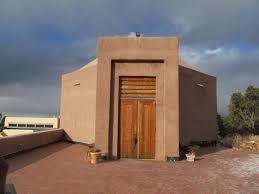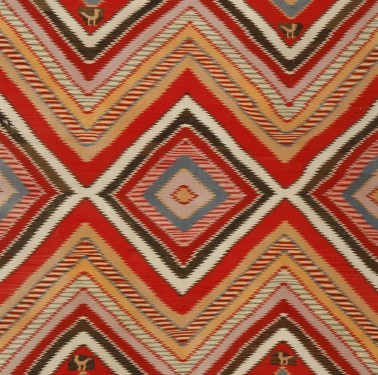Wheelwright Museum of The American Indian
Introduction
Text-to-speech Audio
Images
Museum entrance

Exhibit of Native American Weaving

Backstory and Context
Text-to-speech Audio
Constructed in 1937 for the purpose of housing the collection the Museum was designed, by architect William Penhallow Henderson, after a traditional Navajo dwelling called a hooghan. The build underwent a traditional Navajo blessing. The museum was called by several names before being named the name Museum of Navajo Ceremonial Art.3
Throughout the 1960’s and 1970’s, the Navajo Nation expressed desires to control its own history and religious traditions. In 1977, the museum became the first North American museum to repatriate sensitive cultural artifacts back to native peoples.4 The Museum now focuses on telling the story of Native Americans by exhibiting works by modern Native artists. Expanding beyond the Navajo the Museum also features artifacts from other Native groups, especially those from the Southwest.5 The Wheelwright Museum of the American Indian is the oldest private, non-profit museum in New Mexico.6 It is also on the National Register of Historic Places.
